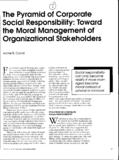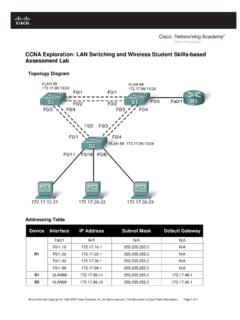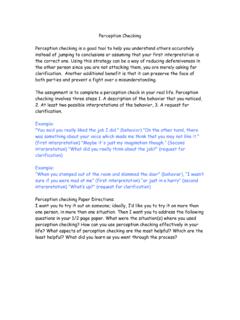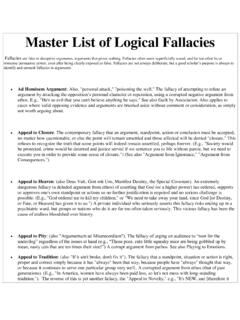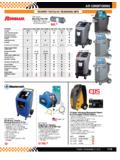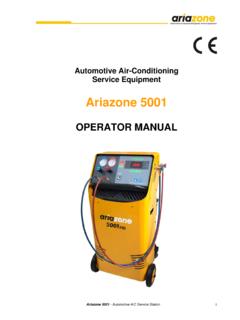Transcription of A/C Refrigerant - Linn-Benton Community College …
1 A/C RefrigerantAir Conditioning systems use Refrigerant to move heat from air inside the car to air outside the carRefrigerants are HAZARDOUS to you and the environmentMotor Vehicle Air Conditioning Technicians servicing MVAC systems must be Trained and Certified Equipment used to service MVAC system must meet Society of Automotive Engineers (SAE) standardsLOOK UP THE STANDARDS You are expected to look up read and become familiar with many specific standards During the test, LOOK UP the answers in the ASE review materials. LBCC will pay for 1 test only! No retakes without your payment.
2 Environmental Hazards The Environmental Protection Agency EPA first regulated MVAC systems using R 12 R 12 was found to be Ozone Depleting Ozone in the Stratosphere filters out harmful Ultraviolet Radiation Pages 5 7 in ASE review bookletEnvironmental Hazards R 12 is a ChloroFluoroCarbon molecule CFC. As the CFC's reach the upper atmosphere, sunlight will cause chlorine atoms to separate. Chlorine reacts with Oxygen to createChlorine Monoxide This causes a "Hole" in the ozone layerPages 5 7 in ASE review bookletEnvironmental Hazards Without an Ozone layer in the stratosphere, Ultraviolet radiation increases causes.
3 Increased Skin Cancer Suppressed Immune System Increased Eye Cataracts Damage to marine and plant lifePages 5 7 in ASE review bookletEnvironmental Hazards R 12 is a ChloroFluoroCarbon or CFC 12 This was the MVAC Refrigerant used until 1995 Newer refrigerants are designed to protect the Ozone layer The most recent refrigerants are designed to reduce Global WarmingPages 5 7 in ASE review bookletTypes of Refrigerant for MVACR efrigerants are identified by chemical compound OR the letter RCFC 12 I = R 12 HFC 134a = R 134aHFO 1234yf = R 1234yfPages 5 7 in ASE review bookletPages 5 7 in ASE review bookletR 134a R 134a is a HydroFluoroCarbon or HFC 134a R 134a is the only Refrigerant that manufacturers recommend for Retrofitting older R 12 systems (other refrigerants have been approved by EPA but are not authorized by manufacturers) R 134a does not harm the ozone however it is a significant contributor to global warmingPages 5 7 in ASE review bookletR 1234yf R 1234yf is a HydroFluoroOlefin or HFO 1234yf HFO 1234yf is the newest MVAC Refrigerant due to its low Global Warming Potential (GWP) Other refrigerants are being considered CO2 technology is being developed.
4 Pages 5 7 in ASE review bookletAny technician servicing MVAC systems must be trained and certified for section 609 of the Clean Air ActYou are being certified for Motor Vehicle A/CSeparate standards exist for section 608 stationary and commercial A/C ARE NOT being trained or certified to handleNon MVAC refrigerants Pages 8 10 in ASE review bookletEPA RegulationsPages 8 10 in ASE review bookletEPA Regulations You are responsible to make sure any equipment you use to service MVAC systems meet Society of Automotive Engineers SAE standards You must ensure Refrigerant used is not contaminated with other refrigerants, or non condensable gases (air) SAE standards are explained on pages 8 10 in the ASE Refrigerant Recovery & Recycling bookPages 8 10 in ASE review bookletAlternative Refrigerants To replace the Ozone Depleting R 12 many alternative refrigerants were created and are regulated by the EPA Significant New Alternatives Policy or SNAP Only EPA SNAP approved refrigerants may be 13 and 14 list approved and Unacceptable alternatives for retrofit or replacement of R 12.
5 From this list ONLY R 134a is approved by any vehicle manufacturer as a retrofit Refrigerant Pages 11 16 in ASE review bookletAlternative Refrigerants To avoid contamination every type of Refrigerant must have different styles of service fittings SAE J639 helps standardize MVAC system design, implementation and service including Refrigerant fitting sizesPages 11 16 in ASE review bookletSAE J639 specifies fitting sizes for each refrigerantPages 11 16 in ASE review bookletR 134a fittingQuick couplerR 12 fittingThreaded couplerPages 11 16 in ASE review bookletRefrigerant Storage Safety Refrigerant containers should never be exposed to temperatures higher than 125 F.
6 Refrigerant cans should not be left in direct sunlight. Increased temperature = Increased pressureHot containers can explode or rupturePages 17 21 in ASE review bookletA/C Refrigerant is under high pressure even when the system is not running. A/C Refrigerant must be properly discharged into a Refrigerant recovery unit BEFORE components or Refrigerant lines get Refrigerant , when exposed to the air, quickly evaporates and will instantly freeze skin or that escapes the A/C system can cause serious and instant frostbite to skin and can blind you if it contacts your 17 21 in ASE review bookletPersonal Safety Wear safety glasses with side shields Chemical splash goggles are the safest Wear leather or insulating gloves when working with pressure fittings or recovery equipment Work in well ventilated area to avoid asphyxiationPages 17 21 in ASE review bookletPersonal Safety Do not used compressed air to leak test compressed air and Refrigerant are flammable Never use a disposable
7 Refrigerant tank for storing recycled Refrigerant Do not fill Refrigerant storage tanks over 60% of the gross weight ratingPages 17 21 in ASE review bookletPrevent Refrigerant Contamination Refrigerant storage tanks are color coded MVAC systems use different service fittings for each Refrigerant Gauge hoses are color coded for each Refrigerant Pages 17 21 in ASE review bookletPages 17 21 in ASE review bookletPages 17 21 in ASE review booklet Most Refrigerant is sold in Disposable Containers Disposable tanks are NOT USED to recycle or reclaim Refrigerant Recycled or reclaimed Refrigerant must be stored tanks marked DOT 4BA or DOT 4BW only.
8 Refrigerant tanks can be filled to a MAXIMUM of 60% gross weight rating Empty disposable Refrigerant containers must be evacuated using a recovery 134a Gauge Hose Red black stripe = high sideBlue black stripe = low side Yellow black stripe = service R 12 Gauge Hose Solid Red or Black Red stripe = high sideSolid Blue or Black Blue stripe = low sideSolid Yellow or Black/yellow = service Pages 22 28 in ASE review bookletPages 22 28 in ASE review bookletGauges of Refrigerant hoses not connected to the vehicle MUST have valves Shut OFF to avoid extra air contaminationDangerous to connect Low side gauge to the High Side of the systemHigh and Low sideof the A/C systemNon Condensable gas Recycled Refrigerant can be contaminated with Air Air is a Non Condensable gas Air will raise system pressures and can be detected by carefully measuring the pressure and temperature of the container High pressures = air Pages 17 21 in ASE review bookletTest for Non Condensable gas (air) Before using any stored container of for Non Condensable gas (air) Make sure cylinder has been stored out of direct sunlight(this can change temperature inside cylinder)
9 Make sure container was stored above 65 for over 12 hours(to ensure temperature inside is the same as outside air) Accurately measure temperature of air next to cylinder Pressure must not be higher than shown on the chart Pages 17 21 in ASE review bookletCarefully measure temperature and pressureof the Refrigerant cylinderPressures higher than shown indicates air in the cylinder Pages 17 21 in ASE review bookletAir in Refrigerant Air is lighter than Refrigerant To purge air from a stored tank slowly vent the top of the cylinder into a recycling/recovery machine. The recycling process will remove air.
10 The pressure chart is only accurate for pure R 134aPages 17 28 in ASE review bookletBefore recycling ANY Refrigerant Use a Refrigerant identifier before connecting to any vehicle or newly acquired Refrigerant tank R 134a Refrigerant being reclaimed, recycled, or used must meet the SAE J2099 purity standards If you recycle or recover contaminated Refrigerant your storage tank becomes unusable. Process contaminated tanks as Hazardous WastePages 17 28 in ASE review bookletRefrigerants CAN NOT be mixed Many refrigerants are used with MVAC It is critical to always use an electronic Refrigerant identifier before recovering and recycling any vehicle s Refrigerant Pages 22 28 in ASE review bookletRefrigerant identifierPages 22 28 in ASE review bookletRefrigerants CAN NOT be mixed Mixed Refrigerants are inefficient (Poor Cooling) Some combinations of refrigerants will clog and ruin recovery and recycling machines Each type of Refrigerant uses a different lubricating oil.


